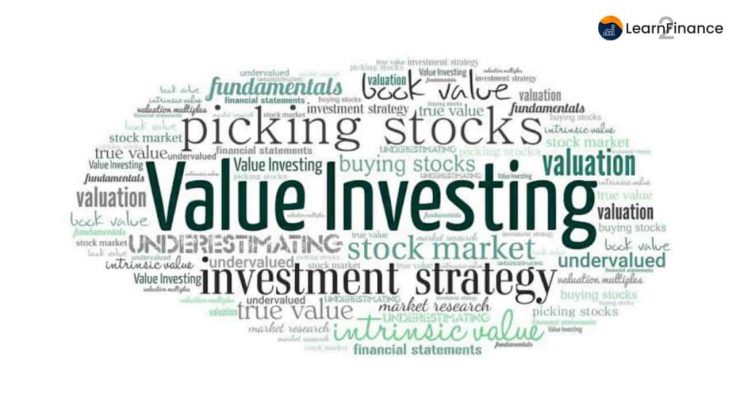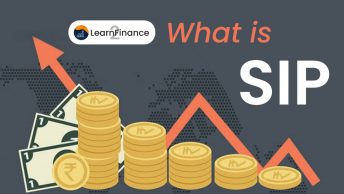In the 1920s, Benjamin Graham, an American economist, investor, and lecturer, pioneered a new form of stock investment known as ‘Value Investing.’ He is recognised as the “Father of Value Investing,” and his approaches are still followed by famous investors such as Warren Buffet and Peter Lynch. By simply analysing firms with precise accuracy, he was able to accumulate considerable fortune while minimising his risks.
Value investing is the practise of purchasing cheap stocks of strong businesses and keeping them for an incredible duration. Learn the fundamentals of value investing and why it has rewarded so many patient, hardworking investors.
What is Value Investing?
You probably haven’t considered purchasing a stock as purchasing stuff. The majority of Millennial investors do not. Indeed, research has revealed that Millennial investors use a passive investment approach.
Undervaluation and overvaluation are the two main ideas that value investing incorporates. When a stock is selling at a price lower than its inherent worth, value investors consider it to be undervalued. On the other hand, when a company trades at a price that exceeds its intrinsic worth, investors perceive it to be overpriced.
Value investors believe that share prices do not justify a company’s long-term fundamentals since such prices are highly dependent on market behaviour. They use a contrarian investment approach, refusing to react to market trends and, in most circumstances, going in the opposite direction of the market.
What Is the Process of Value Investing?
The value investing idea is to buy stocks when they are cheap or on sale, and sell them when they reach or exceed their real or intrinsic worth. Allowing for a margin of safety while trading in value investing companies is another requirement that value investors adhere to.
Stock prices can fluctuate for a variety of reasons, one of which is a well-known market trend that causes a share’s price to deviate from its intrinsic worth.
For example, if the market believes that Company A will do exceptionally well in the future, its share price may rise from Rs. 100 to Rs. 120, encouraging the market to raise its demand and price substantially from Rs. 120 to Rs. 180. However, with closer examination and research, it is discovered that the firm has an average financial and organisational structure that cannot bear such high expectations. As a result, its intrinsic value is found to be Rs. 80, indicating that it is overpriced by Rs. 100.
Top value investors avoid such market trends and instead look for stocks of firms with strong long-term fundamentals. Nonetheless, due to a variety of reasons, their prices are lower than their fundamental worth.
In other words, value investors seek firms with long-term promise but short-term share price declines owing to market biases. Such investors examine a variety of factors and rely on a variety of financial measures to identify which firm is underperforming in the market.
The Intelligent Investor is written by Benjamin Graham. In certain areas, he is referred to as the “Father of Value Investing.”
Before investing, savvy investors, he claims, do a thorough and in-depth study. This will provide them with secure and consistent profits on their investments.
They are also concerned with pricing. Intelligent investors will only purchase a stock when its price is lower than its intrinsic worth.
The intrinsic worth of a firm is how you evaluate it based on your own fundamental research. You do this while completely ignoring the market. To put it another way, disregard what everyone else is saying.
Before purchasing a stock, wise investors seek a margin of safety. This indicates you believe there will be a difference between what you will spend for the stock and what you will gain from it as the firm expands.
What is the process through which investors determine intrinsic value?
When looking for value companies, value investors seek several fields to cover in order to estimate their underlying worth as exactly as feasible. These include a company’s financial history, sales and cash flows through time, business strategy, profits, and projected profitability, among other things.
They may also decide to explore why a company’s stock is undervalued and whether they have the organisational and financial potential to recover from such undervaluation.
There are also some qualitative indications that might tell you if a company’s stock is cheap or overpriced. They are called –
- Indulge in a financial swindle/scam.
- A company’s credit rating indicates its ability to repay debts.
- During the last market downturn, profit or loss was made.
Some of the most important factors to look at before Investing:
1. (EBIT)Earnings Before Interests and Taxes:
EBIT is used to calculate a company’s cash flow without taking into account secondary expenditures and earnings. Taxation is a key element in this case since its regulations allow for certain occurrences that might obscure a company’s true earning potential.
For example, a firm may lose money in its first few years, but if it is built on a solid financial and organisational foundation, it will benefit in following operational cycles. However, according to tax regulations, businesses can opt to carry over their losses into subsequent years to offset future earnings, leading such future profits to be reduced. It conceals a company’s earnings potential. As a result, taxes is not used to evaluate a company’s value.
2. EBITDA (Earnings Before Interests, Taxes, Depreciation, and Amortisation):
It is a variation on EBIT in which earnings are computed after depreciation and amortisation charges have been deducted. Depreciation and amortisation are both provisions that have no effect on real cash flow. As a result, it gives a more complete and exact picture of a company’s earning potential.
3. Cash flow discounting:
Discounted cash flow analysis is an important statistic that helps investors to forecast a company’s future cash flows and determine its present value. It accomplishes this by employing a discounted rate that accounts for price level increases. This statistic is used by investors to assess a company’s current worth as well as its future potential.
As investors get a clear understanding of the two variables described above, they will be able to determine if the company’s stocks are cheap or not.
4. P/E (Price/Earnings) Ratio:
The price-to-earnings ratio, often known as the P/E ratio, denotes the connection between a company’s share price and per-share earnings (EPS).
If a company’s stock is valued at Rs 100 and its earnings per share (EPS) is Rs 18, the P/E ratio is (100/18) or 5.55. This measure is critical for all investors since it represents the amount an investor must invest in a firm to receive Rs 1 of its earnings. In the case shown above, an investor would have to pay Rs 5.5/share to gain Rs 1.
If a company’s EPS is low, its P/E ratio rises, and vice versa. When an organization’s P/E ratio is high, it means that an investor must spend a big amount to earn one unit of the company’s earnings. As a result, a high ratio suggests that the shares of such a firm are overpriced.
5. The P/B ratio:
The P/B ratio, also known as the price-to-book value ratio, denotes the per unit book value of a company’s assets and the per unit share price. The former is calculated for a corporation by dividing the entire book value of its assets by the market value of its outstanding shares. If a company’s share price is less than its per unit book value, it indicates that its stock is undervalued. It also refers to the reality that an organisation has the required potential to generate profits in the future but is experiencing a short-term financial crisis as a result of circumstances such as poor demand.
These measures and criteria are used by best value investors to assess if a firm is cheap.
Conclusion:
Taking a leisurely approach to investing may appear foolish to others. However, there is a reason why they say that slow and steady wins the race.
Few of us have the fortitude to wait for constant, consistent rewards. The majority of us are only interested in making quick money.
However, value investing is not supposed to be seductive. It is intended to generate profits in the long run.
You must be willing to devote time to research in order to accomplish this properly. You must be patient and keep your stocks. If you can achieve this, your net worth will rise over time.
Takeaways:
In this blog post, I’ve just scratched the surface of value investing. I propose that you get a copy of The Intelligent Investor and read it from cover to cover. Benjamin Graham’s value investing knowledge and thought process is astounding.



![10 [Must Read] Books on Personal Finance for Indian Investors 3 10 [Must Read] Books on Personal Finance for Indian Investors](https://learn2finance.com/wp-content/uploads/2021/09/10-Must-Read-Books-on-Personal-Finance-for-Indian-Investors-344x194.jpg)




